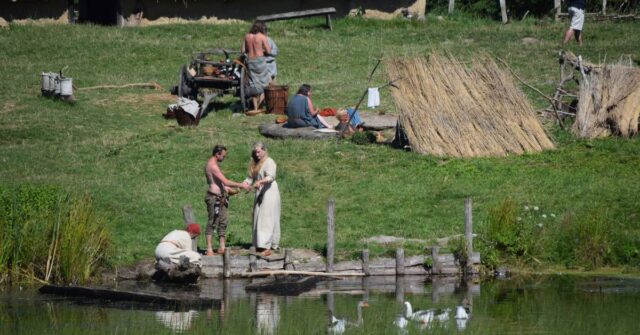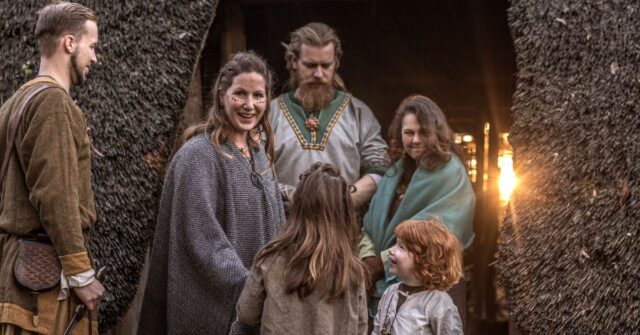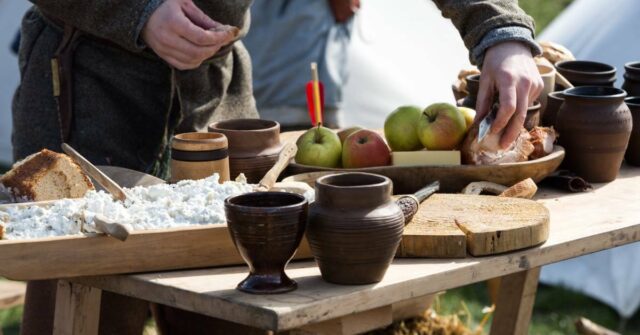The Vikings, known for their maritime prowess and exploration spirit, also had a unique culture and style, including their footwear. This article explores the evolution and significance of Viking footwear, spanning from leather to wooden shoes.
Introduction to Viking Footwear
The shoes of the Vikings were a fundamental part of their daily life and reflected the materials available and the challenges they faced in their environment.
These shoes were practical, comfortable, and sometimes even ornate, showcasing the Viking’s craftsmanship and taste.
Historical Context
Understanding the context in which Viking footwear was developed gives us insights into its functionality and design. This context includes the significance of shoes in the Viking Age and the influence of Viking exploration on footwear trends.
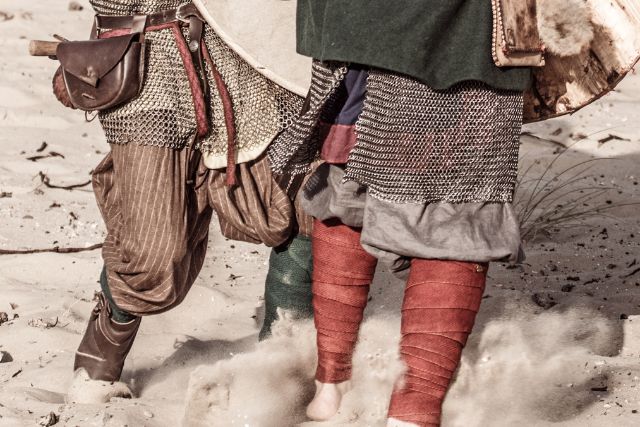

The Importance of Footwear in the Viking Age
Footwear was an integral part of Viking attire. It protected their feet from harsh weather conditions and rough terrain, and it also signified social status. More affluent Vikings had access to better-quality, intricately designed shoes.
Viking Exploration and its Impact on Footwear
Viking exploration and conquests had a notable impact on their footwear. As they traveled and traded, they encountered and incorporated different styles and construction techniques, influencing the evolution of Viking shoes over time.
Materials and Construction
The Vikings made their shoes primarily from leather and wood, leveraging the durability and availability of these materials. The construction techniques used resulted in functional footwear suited to their lifestyle and environment.
Overview of Materials
Viking shoes were typically made from cowhide, goat skin, and birch wood. The choice of materials depended largely on the shoe’s intended use and the wearer’s status. Higher-status individuals might wear shoes of finer, better-quality leather.
Leather Shoes
Leather was a common material used for Viking shoes due to its durability, flexibility, and relative ease of acquisition and processing.
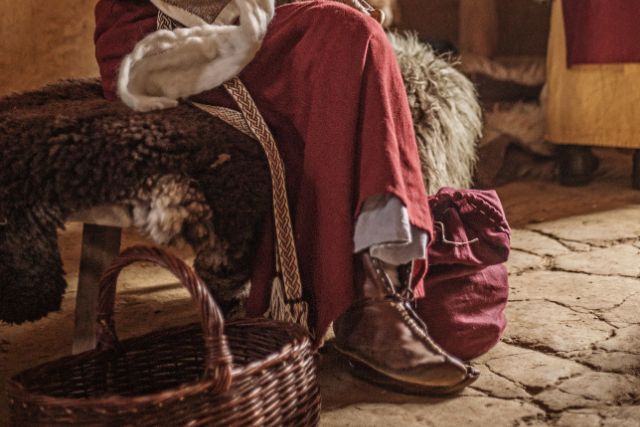

Types of Leather Used
Common types of leather used included cowhide and goatskin. Cowhide was more durable, while goatskin was softer and more comfortable.
Construction Techniques
Leather shoes were usually made using a turn shoe construction method. This technique involved sewing the upper part of the shoe to the sole inside out, then turning it right side out for use.
Wooden Shoes
Wooden shoes, also known as clogs, were used in wet environments like marshes or during heavy rain due to their waterproof properties.
Types of Wood Used
Birch, willow, and alder were common types of wood used to make Viking clogs due to their durability and availability.
Construction Techniques
The construction of wooden shoes involved carving the wood to fit the wearer’s foot. A leather strap might be added for a more secure fit.
Viking Shoe Designs
The design of Viking footwear varied based on factors such as social status and regional influences. They ranged from simple, practical designs to more intricate ones that displayed craftsmanship and wealth.
Style Variations Based on Social Status
The style of a Viking’s shoes often reflected their social status. Those in higher echelons of society would have shoes made of high-quality materials with ornate designs, while the less affluent wore simpler, more practical shoes.
Regional Differences in Design
Regional variations also influenced Viking shoe designs. Depending on where they lived or which cultures they interacted with, the shoes varied in style, ornamentation, and construction methods.
Functionality and Durability of Viking Shoes
Viking shoes were designed for functionality and durability, reflecting the demanding environments and the active lifestyle of the Vikings. This section explores how different materials affected these aspects.
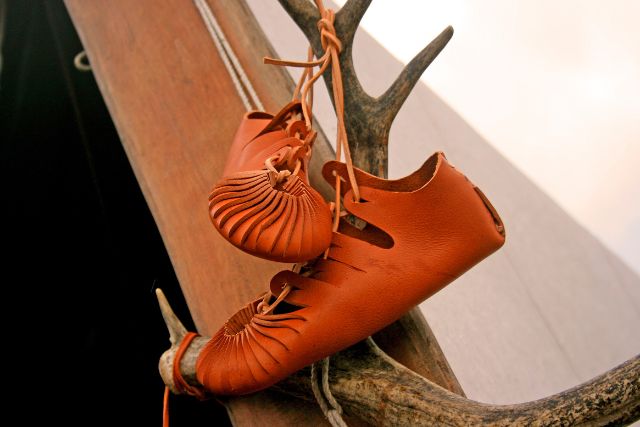

The Durability of Leather and Wooden Shoes
Leather shoes were known for their flexibility and durability, offering a good balance between comfort and longevity. Wooden shoes, on the other hand, excelled in challenging weather conditions due to their natural water-resistant properties.
Adaptations for Different Climates and Terrains
Viking shoes were adapted to different climates and terrains. For instance, shoes for colder regions were often lined with fur for insulation, while those designed for wetlands were often made of wood to resist water and decay.
Viking Shoe Decoration and Symbolism
Decoration and symbolism played a significant role in Viking culture, and this was reflected in their footwear. Shoes were not just functional items but could also be a medium for expression and communication.
Use of Ornamentation
Ornamentation was common on Viking shoes, especially those of higher-ranking individuals. Decorations could include carved patterns on wooden shoes or intricate leatherwork and embroidery on leather shoes.
Symbolic Meanings
Some decorative elements on Viking shoes had symbolic meanings. For instance, certain patterns and motifs may have been used to invoke protection, and good fortune, or to denote social status.
Footwear in Viking Rituals and Burials
Viking shoes also had spiritual significance and played a role in rituals and burial customs, offering fascinating insights into their beliefs and practices.
Footwear in Ritual Practices
In some rituals, specific types of shoes were worn or offered as part of the ceremony. These might be intricately decorated and symbolically significant.
Footwear in Burial Customs
Footwear was commonly included in Viking burials. The type and condition of the shoes could provide clues about the deceased’s status, wealth, and lifestyle.
Viking Footwear in Historical Records and Archaeology
The study of Viking footwear benefits from both historical records and archaeological findings. These sources provide valuable insights into the shoes’ construction, usage, and societal role.
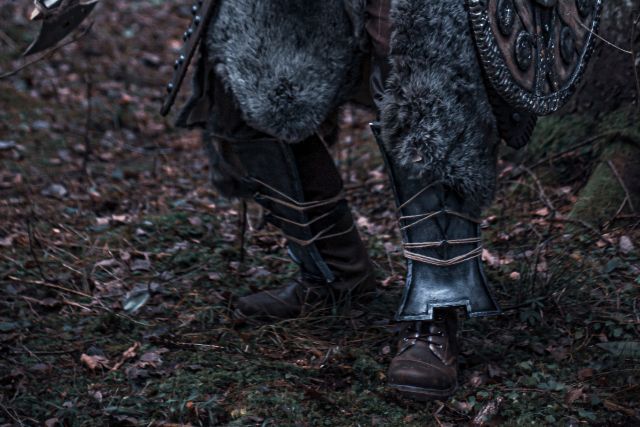

Written Accounts of Viking Footwear
Some contemporary written accounts, such as sagas and law codes, mention Viking footwear and offer glimpses into their significance and variety.
Archaeological Findings of Viking Footwear
Archaeological excavations have uncovered various examples of Viking shoes, offering tangible evidence of their designs, materials, and construction techniques.
Reconstructions and Replicas
Modern reconstructions and replicas of Viking shoes help us understand their function and aesthetics, giving us a more tangible connection to Viking footwear.
Conclusion: The Legacy of Viking Footwear
The legacy of Viking footwear is evident in the durable, practical designs that we continue to emulate today. These shoes not only served their practical purposes but also shed light on the Viking culture, social structures, and beliefs.








